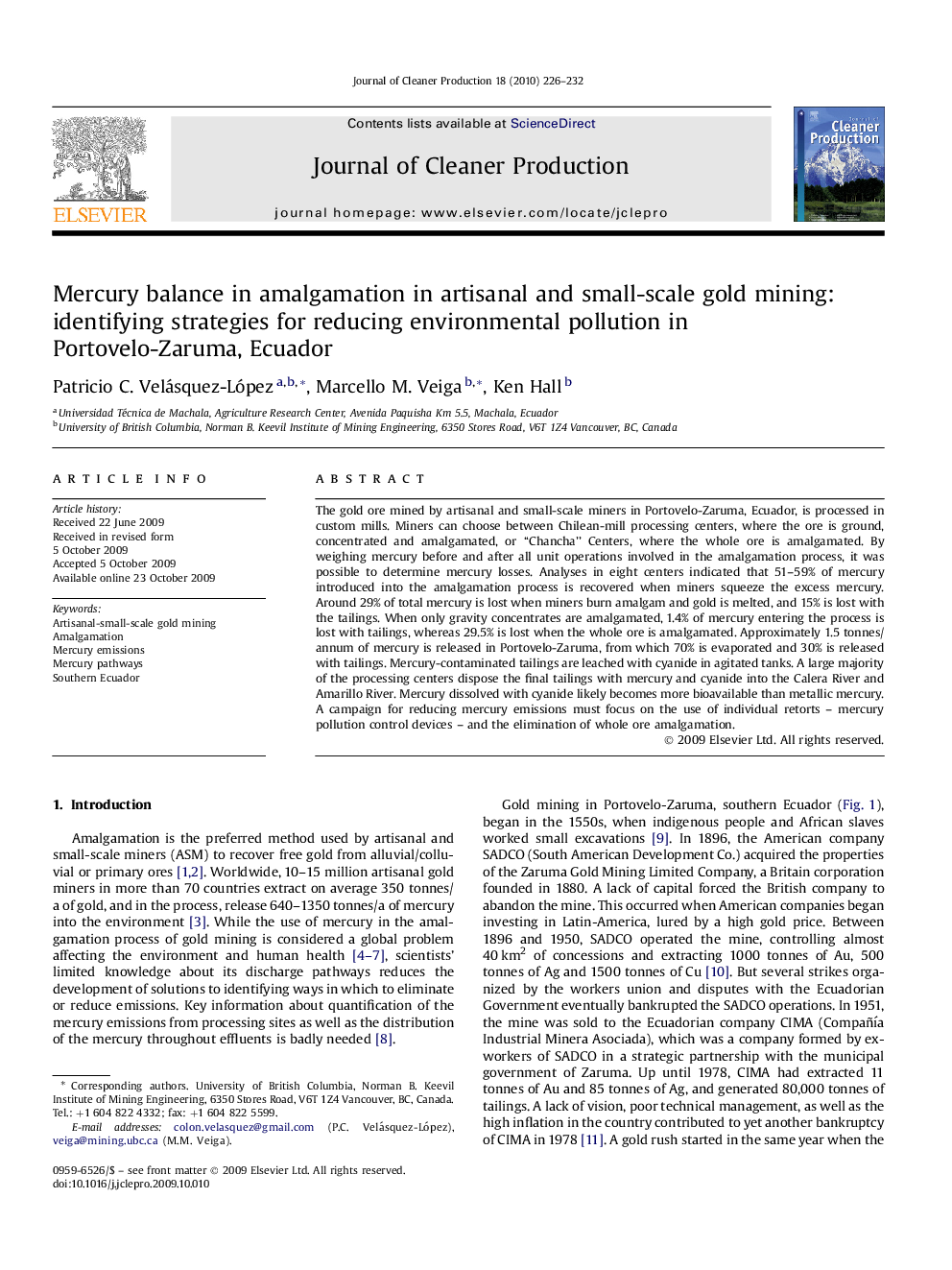| Article ID | Journal | Published Year | Pages | File Type |
|---|---|---|---|---|
| 1746513 | Journal of Cleaner Production | 2010 | 7 Pages |
The gold ore mined by artisanal and small-scale miners in Portovelo-Zaruma, Ecuador, is processed in custom mills. Miners can choose between Chilean-mill processing centers, where the ore is ground, concentrated and amalgamated, or “Chancha” Centers, where the whole ore is amalgamated. By weighing mercury before and after all unit operations involved in the amalgamation process, it was possible to determine mercury losses. Analyses in eight centers indicated that 51–59% of mercury introduced into the amalgamation process is recovered when miners squeeze the excess mercury. Around 29% of total mercury is lost when miners burn amalgam and gold is melted, and 15% is lost with the tailings. When only gravity concentrates are amalgamated, 1.4% of mercury entering the process is lost with tailings, whereas 29.5% is lost when the whole ore is amalgamated. Approximately 1.5 tonnes/annum of mercury is released in Portovelo-Zaruma, from which 70% is evaporated and 30% is released with tailings. Mercury-contaminated tailings are leached with cyanide in agitated tanks. A large majority of the processing centers dispose the final tailings with mercury and cyanide into the Calera River and Amarillo River. Mercury dissolved with cyanide likely becomes more bioavailable than metallic mercury. A campaign for reducing mercury emissions must focus on the use of individual retorts – mercury pollution control devices – and the elimination of whole ore amalgamation.
